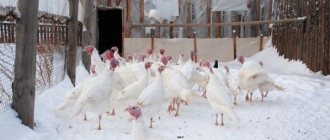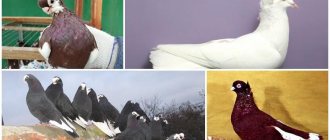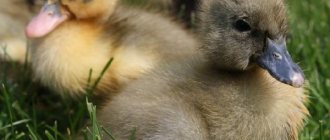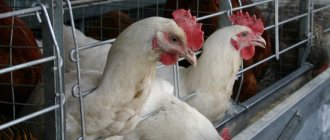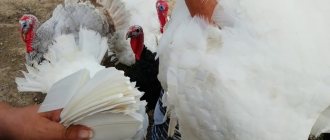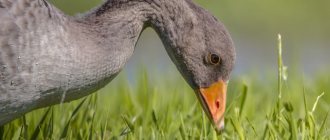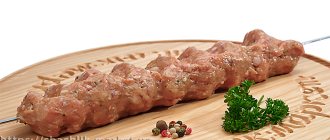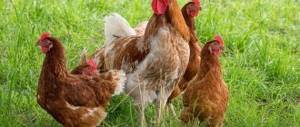Wound treatment in case of errors
Sometimes, while performing a manipulation, a farmer accidentally damages a vessel.
In such a situation, it is recommended to take immediate action. First of all, it is important to stop the bleeding
For this purpose, it is permissible to use the following substances:
- "Betadine" is an iodine solution that has an aqueous base.
- "Miramistin" - has pronounced disinfecting properties and helps heal damaged areas.
- Hydrogen peroxide.
If a blood vessel is damaged during wing trimming, ordinary iodine cannot be used for treatment.
Before the procedure, it is important to prepare all the necessary medications
If pruning results in a deep wound and the bleeding cannot be stopped, you should immediately contact a veterinarian.
Trimming the wings of domestic ducks is considered a simple procedure.
It is important to have the necessary skills and act as confidently as possible. Before carrying out the manipulation, you should prepare all the necessary equipment.
This will help make the process much easier for the poultry and the farmer.
An effective way to solve the problem
Trimming is suitable in relation to a decoy duck, because Partially, the ability to fly when using this method is still preserved, and the resulting effect will be sufficient for the hunter. If you look at the photo of a goose wing, you can see that it consists of narrow and wide blades and a core
Next, just pay attention to the longest feathers - the flight feathers. They should be of interest
The procedure is as follows:
- sit on a stool and firmly but delicately squeeze the drake with your feet so as to hold it, but not hurt it;
- turn it sideways towards you;
- hold the scissors in one hand, hold the duck’s wing with the other;
- To thin out the plumage, you only need to trim the wide blade, without affecting the narrow one.
Some experts believe that two wings of a decoy duck can be cut off, because then the imbalance is not disturbed, but the ability to fly high is suppressed. This is what you are trying to achieve in this case.
Two ways to shorten the wings of guinea fowl
African exotic birds of the domesticated type originated from a free bird, so its good ability to fly often interferes with farmers in raising domestic birds, so wing trimming is indispensable.
What is important in the first pruning method?
One-day-old guinea fowl or those that have reached five days of age need to trim their wings using the first method. This operation is similar to amputation. It is carried out using a hot knife or kitchen scissors for cutting fish carcasses.
For all small guinea fowls on the farm, the first phalanx of the wing is cut off. The wound formed after the procedure must be treated with any antiseptic. The most common: iodine, hydrogen peroxide, brilliant green. Surgical intervention is carried out before the guinea fowl huddle and fall asleep, so they will not pay attention to the wounds and peck at them. It is recommended to remove the phalanx on one wing. By using the first method, you will not have to deprive adult guinea fowl of their beautiful plumage. The risk of losing livestock is minimal.
How to trim guinea pig wings using the second method?
A technique that has become very popular in poultry farming is how to trim the wings of a bird that has already grown or is just getting its wings. For guinea fowl, the procedure is not painful, although the birds become less beautiful in appearance.
Before you start trimming, choose one of the wings, which will have to be rotated 100 degrees. Only the first order of feathers, called terry feathers, need to be trimmed. Ten-centimeter skin formations in the form of stumps will remain. No processing of feathers is required. These procedures should be done three times a year. Actions are carried out as soon as the wings grow.
It is up to the owners to decide which method of trimming guinea pig wings to choose. It should be remembered and taken into account that an adult bird from a distant exotic country is shy and quite noisy; in the first days of its life, the chicks are more silent.
The bird's cry reflects and communicates to its owner its condition and what it wants at a given time. Until the age of twenty-eight weeks, the bird's calls indicate hunger, pain, or call for play. At the same time, males have sharper voice intonations.
After the onset of puberty, calls can also express the dissatisfaction of males with females and the love of females for males. Guinea fowl and guinea fowl sometimes cannot outshout each other.
Flight ability
Domesticated turkeys exceed their ancestors in body weight - the weight of medium-sized males reaches 17 kg, and heavyweights - 35 kg (a wild turkey gains a maximum of 10 kg). Weight and conditions of detention reduced the ability to fly, but did not completely eradicate it. To get into the air, a domestic turkey requires a run; its flight speed does not exceed 20-25 km/h. She may also “jump and fly” to settle on the chosen perch.
The wings are driven by flight muscles, which account for almost 20% of the bird's weight. Lifting force and the ability to catch air currents are provided by flight feathers. They are divided into 2 groups:
- primary - they are attached to the bones of the hand with the help of tendons;
- secondary - they are located in the area of the ulna.
The largest role in flight is played by feathers of the first order - their shortening practically makes it impossible to fly, while the complete removal of other feathers, including coverts, turns out to be useless.
The tail of a bird, or more precisely, the tail feathers, plays a certain role in flight. They are able to move apart, increasing the area, and also turn in two directions (this involves 6 pairs of muscles). The tail stabilizes the flight and provides the ability to maneuver in the air.
How to trim the wings of turkeys?
The correct name for this bird is domestic turkey. The male is called a turkey, hence the colloquial name for the female - turkey, and the chick - turkey.
The wild turkey was domesticated by the indigenous people of America, the Aztecs, long before Europeans appeared on their land, who brought this beautiful and powerful bird with excellent dietary meat to Spain in the 16th century. From there it spread to farms throughout Europe.
This bird is from the class Galliformes. Yes, yes, they are direct relatives of ordinary chickens and were previously called Indian or Spanish chickens in Russia.
Read also: Keeping turkeys in winter at home
Tips and tricks
What can you do to make the procedure quick and easy? You can use some tricks of experienced farmers:
- If you fill the feeders with grain in advance, the entire population will head for food. Then it will be easier to catch this or that individual without causing unnecessary noise.
- If the chicken is in an enclosure, you can drive it into a corner and cover it with a box. This will make the capture process much easier.
- After catching, there is no need to rush to start the procedure. The captured bird should be calmed with light stroking.
- If an individual breaks out, they press it under the chest with both hands, holding the wings, and pull the legs back.
- If the chicken is excited during the manipulation, and this threatens her with stress, it is recommended to trim just one wing once. This way the hen will not fly.
- If you cover an individual's head with a cloth that does not allow light to pass through, it will behave much calmer. This will protect the farmer from injury and the hen from unnecessary stress.
- You need to spread your wings so that there is clearance. This will eliminate the possibility of causing injury to the hen.
- To prevent a bird from flying, you can trim only the first ten feathers.
Tangling wings using tape
Wing trimming is an easy way to get rid of unwanted flights from your pet birds. But the procedure can lead to negative consequences:
- Violation of the brooding process. Laying hens warm their future offspring using their body and flight feathers.
- If the poles and perches in the chicken coop are placed high, the chicken simply will not be able to climb there.
- Sometimes after circumcision the natural shedding process is disrupted.
For these reasons, farmers have developed more humane methods of limiting flights. Experienced poultry keepers tangle the wings using tape. This method is used for both chicks and adults.
Take tape or a strip of other durable material 1.5 centimeters wide. One end of the strip is tied around the wing joint. The other end is passed under the sternum of the hen and the joint of the second wing is tied.
Cauterization of wings in day-old birds
If a farmer independently breeds a new number of chickens, he can use the method of burning the wings. The method is applied only to chicks no older than 24 hours. In chickens older than a day, severe bleeding begins after the procedure, and the bird dies.
The meaning of the method is that a hot metal rod is applied to the extreme part of the wing. After cauterization, adult birds will no longer have to trim their flight feathers.
Tips and tricks from experienced poultry farmers
- Feathers other than those mentioned above should not be removed; they serve as natural insulation for the bird.
- If a person is not sure that he can cope with pruning himself, it is better to call someone more experienced.
- When the molting process begins, the chicken trimmings from the flight wing will not fall out on their own, then the owners will need to take the chicken and carefully pull out these trimmings themselves.
- During the molting period, it is not recommended to trim the wings; the bird is already under a lot of stress. They are not active, eat little, and look boring. Metabolic imbalance is to blame for everything.
Chicken in flight
Not everyone knows what to do when chickens fly over the fence. Owners act differently, much depends on the breed. Some people shorten it, cutting it by 4-5 cm, so as not to look for their birds on other people’s property, not to quarrel with neighbors, and not to waste their nerves and time.
Note! Trimming feathers in no way prevents hens from hatching eggs. However, cutting it too short is not recommended.
For example, if you take the Pavlovskaya breed, it needs to trim its feathers. If the bird is too heavy, for example, like the Brahma breed, there is no point in pruning - it will still not be able to fly.
If owners notice that birds are crossing fences, they often wonder what to do to prevent chickens from flying over the fence. If this happens repeatedly, it is best to trim their wings to avoid further incidents.
Experienced farmers prune either in the evening or early in the morning. In the evening, pruning is done in the dark, when the birds have already settled down for the night. They can't see anything, so they won't experience too much stress. The only thing is that these are not very comfortable conditions for the owner.
How to properly spread your wing
In the morning, the wings are trimmed the moment they are released from the chicken coop or barn. They open the door slightly and catch one at a time. Most often, only one wing is trimmed, then the chicken will be able to jump off the perch, but will not fly up the fence or go into the neighboring garden.
Important! You can’t build high nests for chickens, because if their wings are cut off, they won’t be able to fly up or fly down there, they might break something; there were cases when chickens lost their ovaries and then couldn’t lay eggs. Some farmers install a net with large cells over the area intended for chickens; this prevents the birds from flying anywhere and also protects them from various predators
Some farmers install a net with large cells over the area intended for chickens; this prevents the birds from flying away somewhere and also protects them from various predators.
When trimming feathers, some people cover the chickens’ heads with something, for example, a sack or package; others catch them when feeding. Everyone chooses the method that is most convenient for them.
The urge to fly in chickens is minimally developed. However, from three months the birds try to take off. Although the flight does not last long, it will be associated with problems - pecking vegetables in neighbors' gardens, birds running away from the yard. To protect yourself from inconvenience, you need to know how to properly trim the wings of chickens so that they do not fly.
Turkey breeds prone to flight
In the modern classification, there are more than thirty breeds of domestic turkeys of various weights and breeding directions:
- egg;
- meat and eggs;
- meat breeds, so-called broilers.
How to clip turkeys' wings
Several breeds are in greatest demand in Russian households:
- Bronze Broad-chested;
- White Moscow;
- White broad-chested;
- The so-called Bigs, crosses bred by the British with the markings Big-6, Big-8, Big-9.
The largest in the world is considered to be Big number six; turkeys of this cross in adulthood can easily reach 40 kilograms.
And now a logical question arises: can a bird with such a huge weight fly and fly over a fence? It turns out it can, and how! Adult turkeys are capable of flying at speeds of more than 20 kilometers per hour.
Well, of course, they won’t fly south to spend the winter, but this bird is quite capable of flying over a two-meter fence in search of greener and tastier grass, or flying onto a tree branch to feast on fruit. And at the same time dig up and trample the beds in the owner’s or neighbor’s garden.
It is important! According to farmers, only the White Broad-breasted turkeys do not fly at all. All other breeds will require the owners to answer the question - what to do to prevent turkeys from flying? And taking urgent measures to restrict the freedom of poultry, in order to avoid conflicts with neighbors and the safety of the birds themselves. Otherwise, having left the territory allotted to it, the turkey may well die under the wheels of a car or be torn apart by dogs
Otherwise, having left the territory allotted to it, the turkey may well die under the wheels of a car or be torn apart by dogs
All other breeds will require the owners to answer the question - what to do to prevent turkeys from flying? And taking urgent measures to restrict the freedom of poultry, in order to avoid conflicts with neighbors and the safety of the birds themselves. Otherwise, having left the territory allotted to it, the turkey may well die under the wheels of a car or be torn apart by dogs.
Flying turkey
The feasibility of pruning
The turkey is a massive bird, so it does not take off often, but if there is not enough food or water in the enclosure, then it may well fly over the fence to get food for itself. The cause of “escape” can also be crowded conditions in the poultry house.
Turkeys can be injured by fencing during migration. They trample the beds - this does not contribute to good relations with neighbors. It is not uncommon for birds to be attacked by dogs or hit by a car. If a turkey eats something inappropriate in the wild, then infectious diseases have to be treated
In any case, “escaping” only brings losses, which is why it is so important to know how to properly trim the wings of turkeys
Other techniques for holding a bird
In order to prevent the flight of young animals, it is recommended to stretch the mesh around the walking yard or enclosure to a height of 2 m. It is also practiced to cover the enclosure with a mesh roof.
According to farmers, shiny Christmas tree tinsel hanging on top of the net also prevents birds from flying out. In this case, the effect of surprise is triggered - in nature there is nothing similar to Christmas tree rain, and the turkey simply does not have an experience-based way of interacting with it, so it does not risk flying through the tinsel.
How to deal with young turkey poults?
Now that we have sorted out the question of how to properly trim the wings of turkeys, let’s look at how to remove excess feathers from young turkeys.
As long as the young animals are kept in a separate room, their numbers will not scatter. But when the chicks reach a certain age, they will be transferred to an aviary, and then young 2- and 3-month-old turkey poults can create a real problem. If you can’t trim their wings, then what should you do?
- You can build the walls of the enclosure to a greater height (2.5 meters will be quite enough).
- Cover the top open area with mesh (if there is no roof).
- In the case of a net, it is recommended to use a fishing net. Birds will not be able to get hurt on such a net.
- Tangle the birds' wings so that they cannot fly.
The tangled wings method is not only suitable for chicks, it is also practiced for adults. To tangle the wings, you need to select tape or a strip of some durable material up to one and a half centimeters wide. One end of the tape is tied around the joint of one of the wings, and then, passing it under the sternum of the bird, it is tied on the other side to the joint of the other wing. Now you can be sure that the bird will not fly again.
Young chicks get used to this type of weaning from flying quite quickly. But older birds, accustomed to being able to straighten their stiff wing joints at any moment, feel confused. Therefore, owners usually do not abuse their birds, and if they resort to this method, they leave the birds a small reserve, and then release them and observe whether the turkey flies or not, but in most cases the binding very successfully prevents them from doing so. Birds with tangled wings feel akin to a claustrophobic person trapped in a confined space. So, it would be more loyal, nevertheless, to trim the feathers of adult individuals.
If the chicks were not purchased at the poultry market, but hatched in an aviary, it is possible to cauterize the wings of one-day-old chicks
To do this, you need to take a suitable piece of metal, heat it over a fire and carefully apply it to the last segment of the wing. This, of course, will cause the turkey some pain, but the wound will heal quickly, but you can be sure that the turkey will definitely not fly in the coming months
But it is worth noting that this procedure can only be performed on one-day-old turkey poults. In two-day-old patients, severe bleeding may occur during the cauterization process.
Read the article: When turkeys start laying eggs.
https://youtube.com/watch?v=t4_8ViE1FHg
Trimming the wings of chickens - methods and recommendations
The urge to fly in chickens is minimally developed. However, from three months the birds try to take off. Although the flight does not last long, it will be associated with problems - pecking vegetables in neighbors' gardens, birds running away from the yard. To protect yourself from inconvenience, you need to know how to properly trim the wings of chickens so that they do not fly.
Why and at what age should you trim your wings?
Chickens fly short and low. The maximum height that a bird can overcome is 2.5 meters. But this is enough to fly over the fence. The record recorded flight of a bird lasted 13 seconds. These indicators are enough to overcome minor obstacles. What threatens a farmer with a short-term flight of a laying hen:
- damage to crops;
- troubles with neighbors due to pecked vegetables;
- the bird may enter the roadway;
- the chicken may get lost;
- birds are susceptible to attack by predators.
To avoid problems, you need to trim your chickens' wings.
Kuram
Layers and broilers are not always trimmed. Meat breeds of chickens are not subjected to trimming.
This is due to the fact that birds quickly gain weight and are physically unable to fly higher than 30 centimeters from the ground. Egg breeds are miniature and light. Therefore, trimming chicken wings is necessary.
They try to carry out the procedure on birds that have changed their plumage at least twice, and if their age is more than 15 weeks.
Rooster
Most farmers do not clip the wings of roosters. The male, being the leader of the herd, remains in his usual territory. Wings are a special element of courtship for him. If they are trimmed, the betta may change its usual behavior.
How to prune correctly
How to properly trim a chicken's wings? The process is not easy and requires certain skills. There are no strict rules for caring for a bird during the procedure, but in order not to injure the individual, you need to know exactly how to trim the wings correctly. If a poultry farmer is new to this business, it is better to seek help from more experienced farmers.
Step-by-step instruction
Before trimming, you need to prepare the tool. We need to think about how to separate birds that have undergone the procedure from those who are about to undergo it.
Algorithm for the procedure:
Catching a bird. Chickens are nimble and timid. Therefore, before starting manipulations, it is better to drive them behind the fence. Holding the bird as close to you as possible, you need to straighten the trimmed wing. Pruning is done quickly and accurately
It is important not to harm the bird. To avoid affecting blood vessels and sensitive areas, the flight feathers are trimmed no more than 6 centimeters from the edge. The second wing is trimmed according to the same pattern.
Should chickens and other poultry have their wings clipped?
Chickens and other poultry are capable of rising into the air to a height of up to 2 meters, some up to 2.5 meters. Therefore, they easily fly over the fence of the enclosure.
The most difficult thing in this matter is to catch and keep chickens, catching a chicken is not so easy, for this you can use a little cunning
Birds outside the fence:
- may be attacked by dogs, cats, and other predators;
- risk being run over by vehicles;
- may become infected with dangerous diseases;
- risk becoming a victim of strangers.
For a farmer, having pets outside the enclosure is also undesirable: chickens and ducks, once in the garden, will spoil the crops and garden shrubs. Chickens love to swarm in the ground, and ducks and geese love to pluck seedlings.
Not all veterinarians are proponents of the procedure.
There are some arguments against trimming feathers:
- When hatching chicks, birds use feathers to evenly warm up and regularly turn the eggs. The hen lays flat over the masonry, warming it; the flight wings help retain heat.
- For ducks, long feathers serve as an attribute of beauty necessary to attract the opposite sex. An individual with trimmed drake feathers is not considered attractive.
- After trimming, feathers shed poorly; the owner often has to pull them out with his hands, helping the birds. The difficult molting process makes them nervous, they gain weight poorly and lay eggs.
Wing Trimming Instructions
You can quickly and easily do this procedure with chicken if you ask someone for assistance. With the participation of a second person, it will be much more convenient for you to straighten the flight feathers and correctly measure the required length for trimming. However, if your pet birds are tame and not shy, then it is possible to perform this procedure alone.
Sequence of procedure processes:
- The first thing to do is to catch the chicken that you will use to shorten the flight feathers on the wings. It should be remembered that chickens are quite fast and dexterous, so it is difficult to do this outside the fence;
- Prepare well-sharpened scissors or pruning shears in advance;
- If you do find an assistant, ask him to hold the bird firmly in position while you directly cut the excess length;
Hold the chicken close to you as much as possible, spread the wing and quickly trim the flight feathers. At the same time, you need to remember that you do not need to cut off, but only trim the feathers a little, doing this without affecting the sensitive parts (blood vessels), since you can hurt the chicken. It is necessary to trim the flight feathers only 6 cm from the edge of the wing;
You need to do the same with the second wing. That's the end - the pruning has been successfully completed.
To ensure that you carry out the procedure correctly and your chicken does not cause you unnecessary inconvenience or even scratches during the process of trimming its flight feathers, we advise you to follow a few safety tips:
- To prevent the capture of the chicken needed for the procedure from causing unnecessary noise and commotion, pour grains into the bird feeder. When they approach the feeder in a herd and begin to eat food, you will just sneak up on the required individual, and then carefully catch it;
- If the chicken, while in your hands, flutters violently and tries to jump off, you need to press it under the chest with both hands, holding its wings tightly and moving its legs back;
- If the chicken is very agitated and the procedure becomes stressful for her, quickly trim the feathers of only one wing. This factor will no longer allow her to take off, she will just roll over on her side;
- To prevent the bird from scratching you and severely injuring itself in an attempt to escape, cover its head with a thick cloth. In this case, she will not be able to see anything and will behave much calmer;
- The flight feathers of chickens are the longest feathers that grow at the beginning of the wing. In order for the bird to be deprived of the opportunity to fly, trimming the first ten feathers is enough;
style=»text-align: left;»>Photo gallery Photo 1. Chicken in flight Photo 2. Rooster took to the road
Trimming the wings of turkeys
How to trim the wings of turkeys correctly so that they do not fly? As a matter of fact, it is not the bird’s wings themselves that will be trimmed, but the flight feathers on them. Trimming is done by half or two-thirds of the feather, so as not to injure the turkey with painful sensations. This operation needs to be carried out by two people, since the bird is large, powerful and it will not be easy for one person to cope with it. It is necessary to pour grain into the feeder; this will distract the bird and make it easier to catch.
Read also: Feeders for turkeys: how to make at home
Attention! If the caught bird actively resists, then the simplest action is to throw a bag over its head. Restricting his vision will force the turkey to calm down.
Feather Trimming Scheme
One person pinches the bird at the legs, holding it in place with his hands and preventing it from pecking, and an assistant spreads the wing to the side and cuts off the feathers with pruning shears or large scissors. After this, the same action is carried out with the second wing. Everything needs to be done quickly and clearly, since delaying the process leads to serious stress for the bird.
Flight ability
Domesticated turkeys exceed their ancestors in body weight - the weight of medium-sized males reaches 17 kg, and heavyweights - 35 kg (a wild turkey gains a maximum of 10 kg). Weight and conditions of detention reduced the ability to fly, but did not completely eradicate it. To get into the air, a domestic turkey requires a run; its flight speed does not exceed 20-25 km/h. She may also “jump and fly” to settle on the chosen perch.
The wings are driven by flight muscles, which account for almost 20% of the bird's weight. Lifting force and the ability to catch air currents are provided by flight feathers. They are divided into 2 groups:
- primary - they are attached to the bones of the hand with the help of tendons;
- secondary - they are located in the area of the ulna.
The largest role in flight is played by feathers of the first order - their shortening practically makes it impossible to fly, while the complete removal of other feathers, including coverts, turns out to be useless.
The tail of a bird, or more precisely, the tail feathers, plays a certain role in flight. They are able to move apart, increasing the area, and also turn in two directions (this involves 6 pairs of muscles). The tail stabilizes the flight and provides the ability to maneuver in the air.
How to properly trim the wings of chickens and roosters
The procedure must be done quickly and carefully, having prepared the required tools in advance and strictly following the instructions. It is best to carry out pruning with an assistant.
Be sure to read:
How to quickly pluck a chicken: methods and step-by-step instructions on how to properly process
You can do the trimming yourself, but the method is applicable when the hens and roosters are tame, not shy, and trust the farmer.
Wing clipping
The operation itself is more unpleasant for chickens than painful. Only the long 10 feathers at the end of the wing, which are noticeably different from the rest, are trimmed.
To correctly identify them, you need to fully extend the chicken wing into the light with a cascade of feathers. Cut 5-6 cm from the edge so as not to touch the hollow air tubes where the blood vessels begin.
At the end of the wing, these rods are flattened; trimming them, along with the feathers attached to them, will not cause any pain to the chickens.
How is wing trimming done?
By clipping the turkeys’ wings, the owner will be sure that even if the bird somehow gets out of the covered enclosure, it will not be able to fly somewhere to the neighbor’s garden and damage the crops there or cause any other outrages.
Turkeys are freedom-loving birds and there is no doubt that they will make constant attempts to break free.
Therefore, let’s move closely to the question of how to trim the wings of turkeys so that they do not fly to their neighbors. To ensure that the circumcision process is as calm and bloodless as possible, it is advisable to follow these tips exactly.
When catching a turkey, it is better not to make sudden movements, so as not to scare the rest of the livestock. Birds that succumb to panic can harm themselves and even break each other's legs. It is best to pour some rare but tasty food for the turkeys and, catching them one by one, carry out the procedure.
Wing clipping
One of the methods of keeping turkeys in an aviary is trimming the flight feathers on the wings, after which these birds no longer fly. The opinions of veterinarians and farmers are divided regarding the need to trim feathers not only for turkeys, but also for other poultry. Although most people are still inclined to believe that pruning is simply necessary in some cases.
The advantages of this method include the following:
- Wing trimming carried out in accordance with all the rules will allow the bird owner to get rid of the headache that turkeys can fly into someone else’s garden and cause harm there or even fly away.
- Turkeys are freedom-loving birds, so they explore new places with pleasure. This can lead not only to injury or illness of the bird, but also to its death.
Trimming a bird's wings
Dear visitors, save this article on social networks. We publish very useful articles that will help you in your business. Share! Click!
- If the wings of future laying hens have been clipped, this may negatively affect the future hatching process.
- The trimmed part of the feathers does not change well during molting, so during this period it will be necessary to monitor the complete renewal of the plumage.
- The pruning procedure must be carried out after each molt.
How to clip the wings of chickens so they don't fly, video
Many people believe that chickens cannot fly at all. However, these people are mistaken. Chickens have wings that they can manipulate. However, the flights are not long or high.
Often these birds can fly to the top of the fence on your property and perch on it to look around. In addition, sometimes they even fly over the fence, which is a danger for them.
In order to avoid such unpleasant situations, you need to know how to trim the wings of chickens.
- 1 Pros and cons
- 2 How to clip wings
- 3 Useful tips
How to clip wings
This procedure will be carried out with ease if you ask someone for help. If two people are involved in the process, then it will be much easier for you to straighten the flight feathers and properly measure the length to which the wings will be trimmed.
But if your chickens are accustomed to human hands, then you can do the trimming yourself.
How the procedure is carried out and its stages:
- First you need to catch the bird whose feathers you will trim. It is worth remembering that chickens are very nimble and resourceful, so it will not be easy for you to catch a bird that has run outside the fence.
- It is worth preparing high-quality scissors or pruners in advance.
- If you can find a companion to help you with the trimming procedure, he will be able to hold the bird firmly in the desired position. At this time you will cut off the excess length.
The chicken must be pressed to the body as tightly as possible, the wing is straightened and the flight feathers on it are quickly cut off. Don't forget that you don't want to cut off the entire feather.
https://youtube.com/watch?v=yp9tA8CkOdA
You just need to trim it and try not to touch the blood vessels, as this will cause discomfort and pain to the bird. It is necessary to trim no more than six centimeters from the end of the wings.
The second wing is trimmed in the same way.
Useful tips
In order for the procedure of trimming chicken feathers to be more comfortable and calm, you need to know some subtleties that we will tell you about:
- To avoid causing a commotion in the chicken coop at the moment when you are catching the desired bird, try pouring grains into the chickens. When they gather together to feed, you can quickly catch the one you need.
- After being caught, the bird in your hands begins to actively fight and try to escape; you need to hold it under the sternum with both hands. In this case, you should press her wings tightly and bend her legs back.
- When the chicken is under severe stress and begins to become actively agitated, trim the feathers on only one wing. This will ensure that it will not be able to take off. It will only fall on one side.
- To prevent the bird from scratching you, you need to throw a piece of dense material over its head. In the dark, birds behave more calmly.
- Remember that the flight feathers are the longest and are located in the initial part of the wing. You can trim about ten of the first feathers and the bird will no longer be able to fly.
- It only costs six centimeters to cut off from the beginning of the wing. This length is the best option. You will not hurt the bird, but you will deprive the bird of its ability to fly.
Now you know how to properly trim the wings of chickens. The procedure is quite simple and does not require special professional training, however, it is easier to do it together. But it’s up to you to decide whether such manipulations are worth carrying out. Every farmer should understand what his chickens need. We wish you good luck.
How to properly trim the wings of chickens, technique, recommendations
The chicken is known to be a bird and when it reaches a certain age, it begins to fly. If you don’t trim your chickens’ wings in a timely manner, you can ruin relationships with neighbors or even lose several chickens. Wing trimming does not harm the bird and is very widely used on farms if the bird is not kept in an aviary but in the wild.
Why do chickens have their wings clipped?
Chickens can easily fly over a fence 2-2.5 meters high. Breeders cannot come to a consensus on whether it is worth trimming the wings of domestic birds, and whether this procedure is really so important.
Advantages of wing clipping:
- The owner of the farmstead need not worry about his plot, where he diligently grows vegetable crops.
- Chickens with trimmed feathers will not be able to get onto a neighbor's property and cause damage to crops.
- The owner will be calm that his birds will not get hit by a car if they find themselves on the roadway.
- Poultry is protected from attacks by pets, thereby reducing losses of individuals.
The advantages of the method of clipping the wings of chickens are for the most part convenient for the breeder, but contradict the physiological characteristics of the birds. For example:
- The natural plumage is disrupted, which does not allow the hatching eggs to be fully turned over and provided with heating.
- Some are inclined to believe that the bird may experience stress, since it will not be able to get to its favorite places, perches, or nests.
Despite the shortcomings of the method, most breeders practice trimming flight feathers. If you abandon this procedure, you will need to change the conditions of detention, which will incur additional expenses and increase the cost of production.
Trimming technique
A correctly performed procedure will not cause any pain. There are no blood vessels or sensitive areas in the cutting area.
Sequence of actions of the procedure:
- Prepare a place for the chickens where they will be before the procedure.
- Sharpen your chosen tool: pruning shears, scissors, hatchet.
- Catch the bird you are going to perform the procedure on.
- Calm the chicken, hold it in your arms, stroke it. If necessary, you can cover her head with a thick cloth.
- Hold her close and spread her wing.
- Trim or trim the feathers with quick movements. Remember, you should not cut off the wings, but shorten them slightly. The distance from the extreme part of the feather should not exceed six centimeters.
- Do the same procedure with the second wing.
Experienced farmers can carry out the procedure on their own; beginners will need help in fixing the bird.
Most often, only one wing is trimmed, then the chicken will be able to jump off the perch, but will not fly up the fence or go into the neighboring garden.
As for roosters, they usually do not fly away from their territory and guard the hens. It is not recommended to trim their wings, as they are an important element in caring for chickens. Shortening the feathers may cause the rooster to refuse to perform its duties.
Attention! Before carrying out the procedure, it is important that the bird is healthy, otherwise a stressful situation can aggravate an already weakened body, which will lead to complications and possible death of the chicken
How not to harm the bird?
Despite the fact that trimming wings is a fairly simple procedure, you should pay attention to some recommendations:
- Only the flight feathers can be trimmed. Other feathers should not be removed as they serve as natural insulation for the bird.
- If you have doubts about the quality of the procedure, you should call an assistant or specialist.
- During molting, the clipped primary wings do not fall out on their own. The breeder should pull them out himself.
- During the molting period, it is not recommended to trim the wings. At this time, the bird does not feel entirely healthy, it eats little and is less active. Don't create more stress for her.
- Before the procedure, make sure that the chickens are completely healthy.
- Do not trim more than 6 centimeters of feathers, otherwise the chicken may experience pain.
Birds that are unable to leave their area by flight will not fall prey to danger. There will be no quarrels with neighbors, since the birds will stop destroying their areas.
Basic Rules
If you need to completely deprive a duck of its ability to fly, trim only one wing. If she loses her balance, she will not be able to fly even the slightest distance.
Read more: Potassium requirement of grapes, symptoms of potassium supplements
In order to save his livestock and not keep ducks constantly in closed enclosures, the farmer clips their wings, thereby depriving them of the opportunity to fly away
This method is widely used by decoy duck hunters.
Hold the bird and straighten the wing. Find the first order flight feathers. This is not difficult to do: focus on the fact that these feathers are the longest and straightest. One of the sides of the feather fan is wider - it is this that needs to be removed. Carefully place the scissors on the feather and cut parallel to the shaft. In this case, the appearance of the bird will not change, but it will no longer be able to fly.
Remember that you only need to trim one wing. With two clipped wings, the bird will be able to fly, although not very high.
The first method involves trimming the flight feathers parallel to the shaft
Unlike the first method, here you need to trim not along the rod, but across it, almost in half. The size of each individual is individual, so it is impossible to give an exact indication in centimeters. In order to properly trim the wings of ducks, you need to focus on the fullness of the rod - you need to cut before the transition from the empty cavity to the tubular core. The feather should not bleed. To preserve the “marketable” appearance, experienced poultry farmers recommend leaving the first two or three flight feathers intact.
The first pen is the first method, the next is the second, then the first again and so on. This method was invented by hunters. A decoy duck is necessary to attract its fellows by screaming. Despite the rope that restrains the bird, hunters have long trimmed its feathers, because a rushing bird is capable of tearing out the peg to which the rope is attached or harming itself. This method is also perfect for farming. Of particular importance is that living creatures retain their natural appearance.
- For pruning, you need the sharpest scissors.
- The duck will inevitably resist. Save your hands. For this you will need the thickest gloves and long sleeves.
- If the bird is aggressive, place a thick cloth over its head. This will help you avoid being bitten. In addition, birds calm down in the dark. The package is not suitable for this role. Make sure that the animal does not suffocate.
- Don't trim your feathers too short! A shorn bird will lose popularity with the opposite sex, since feathers are the main measure of a duck's beauty.
- It is highly not recommended to carry out the procedure more than once a year.
- Experienced breeders recommend trimming after molting, since after each change of feather cover, the feathers grow back to the same length as before trimming.
- It is most convenient and safe for two people to trim: one holds the body, the other trims. If you don’t have an assistant, we recommend trimming the duck’s wings while sitting on a chair and tightly clasping the animal with your knees.
- Trimming can be done when the duck reaches 15 weeks of age, which is just when she becomes mature.
- There is no need to trim a duck that is preparing for incubation - the bird needs feathers for better heating, as well as for turning the eggs.
Read more: Blagovarskaya duck breed description, cultivation
Step-by-step instructions and diagram for proper trimming of chicken wings
To carry out the procedure, you must do the following:
- Catch a chicken. This is not easy to do: chickens are shy and temperamental birds. There are several tricks. Since they see poorly at dusk, early in the morning, fishing for trimming can be planned for this time. It will be enough to simply go into the chicken coop and remove the hens and roosters from the roost, transporting them to the trimming site. Another way of catching is to separate the chickens intended for shearing into a separate pen, catch them by coming closer and covering them with a box or basket. After clipping, the birds should be placed separately from the remaining individuals in a specially fenced space inside the enclosure or back into the chicken coop. A good method of catching is to give the birds tasty food and catch them one by one without scaring the others.
- Prepare tools and call an assistant. Sharp scissors are usually used for pruning.
- Trim feathers. One holds the bird tightly under the chest, pressing it towards him with his hands, while the chicken’s legs should be pulled back. The other straightens the wing and quickly cuts the flight feathers in half with scissors, but no more than 5-6 centimeters from the edge.
Features of wing trimming
The most common method is trimming the flight feathers. There are a few things to consider before trimming your flight feather.
The wing plumage is divided into feathers:
- first order, which are attached to the hand and are shorter;
- second order, attached to the forearm, long, flywheel.
The flight feathers need to be trimmed.
Various techniques are used for this:
- cut all the flight feathers around the circumference to a length of about 6 cm;
- cut 2-3 largest ones;
- cut off the fan, leaving the core.
Farmers who practice the third option argue for its benefit by the fact that with these feathers the turkey turns the eggs in the clutch, and their complete removal creates problems for hatching turkey poults. Trimming is carried out on completely healthy turkeys. After molting, the procedure may need to be repeated.
It is also recommended to identify and eliminate the factors due to which birds began to fly.
All the turkey’s food is on the ground - seeds, berries, grass, etc. And if there is enough food and nothing bothers the birds, then they have no need to fly, so this behavior indicates a lack of food, danger, etc.
How to prune correctly
In order to properly trim the flight feathers, it is advisable to distract the turkey from the procedure with food. At this moment, they clamp it with their feet, straighten the wing and trim the feather with pruning shears or good scissors.
The procedure can be performed alone or by two people: one person holds the turkey, and the second quickly and accurately trims the feather. The action can be carried out for all turkeys over the age of 4.5 months.
How to clip the wings of turkeys: video
What to do if birds behave aggressively
If the turkey is restless or aggressive, then covering its head with a dark cloth will reduce mobility, calm it down, and eliminate distractions. You can also trim different wings at different times to reduce the stress of the procedure.
Read also: How to pluck a turkey at home
In addition, a bird may stop flying even with one wing clipped.

